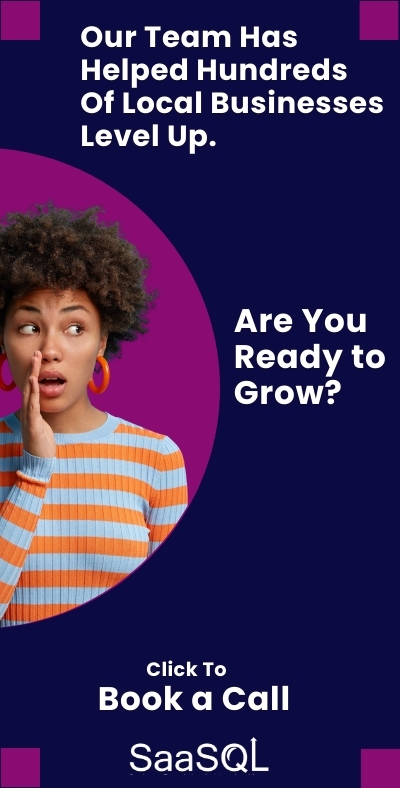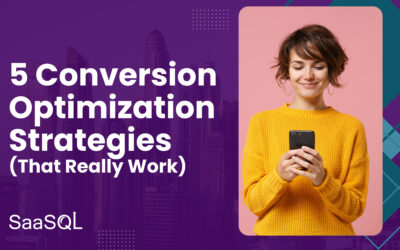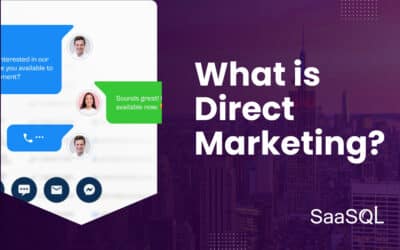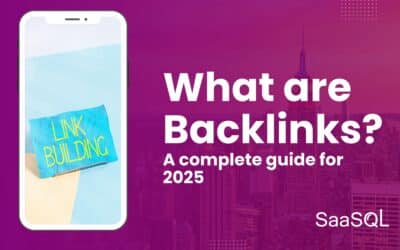Pay-Per-Click PPC advertising is a digital marketing strategy that focuses on driving traffic to websites through paid ads. But in this case, rather than paying for exposure (impressions) as with other digital marketing channels, within this model, advertisers pay a small fee each time their ad is clicked. In this way, marketers are essentially buying visits to their site rather than attempting to earn those visits organically. Particularly on search engines, this method is hugely popular because it enables business to target their budgets to consumers who are showing active interest in their products / services. Advertisers can target users based on keywords, demographics, location, and even the time of day, making it an efficient way to reach a specific audience.
While other platforms like Meta have adopted the model effectively, the most common platform for PPC advertising is search engines. Here, advertisers bid for ad placement in a search engine’s sponsored links, each ad delivered when someone searches on a keyword that is specific to their company. For instance, if we are a plumber and we bid on the keyword “tankless water heater,” we can ensure we show up in the top four spots of the Google results page, provided we have the necessary budget. Every time our ad is clicked, sending a visitor to our website, we pay the search engine a small fee.

The beauty of PPC advertising, is that it has the potential to offer an excellent return on investment (ROI) when properly managed. It’s adaptable to businesses of any budget level, measurable and provides companies with a straightforward way to scale. And of course, it’s not without its pitfalls.
But, we’re getting ahead of ourselves. Hang tight and we’ll share plenty of tactics, techniques and secrets from the trenches—how smart bidding can skyrocket your ROI and why negative keywords might become your new best friends—this and more. We’ll start a little slow, with a simple introduction, before diving deep.
Table Of Contents:
- Understanding PPC Advertising and Its Importance
- Key Components and Mechanics of PPC Advertising
- Key Components and Mechanics of PPC Campaigns
- Crafting Effective Paid Search Campaigns
- Maximizing ROI Through Strategic Bidding and Optimization
- FAQs About PPC Advertising
- Conclusion
Understanding PPC Advertising and Its Importance
Imagine a world where your business can appear right in front of people the moment they’re looking for what you offer. That’s the power of PPC advertising, which stands tall as a pillar in the temple of digital marketing. With its unique ability to drive targeted traffic at warp speed, it’s no wonder savvy marketers allocate significant chunks of their ad spend here.
Defining PPC Advertising
PPC advertising is similar to possessing a virtual signboard that only charges you when someone takes an interest and clicks it. In this online advertising model, businesses bid to place ads in search engine results or on websites within display networks. Each click represents not just potential website traffic but real individuals with intent—be it learning more about your product or getting ready to buy.
Dive into Google Ads or Bing Ads, and you’ll find yourself playing in leagues where every move counts towards scoring points called ‘clicks.’ But don’t let terms like ‘ad rank’ and ‘quality score’ intimidate you; think of them as signposts that help ensure your ads are doing their job, telling the right story to align with users’ search queries.
Long-tail Keywords & the Role of PPC in Digital Marketing
Incorporating PPC advertising into your digital marketing mix means tapping into a stream where 70% of search traffic comes from long-tail keywords—a goldmine for those who know how to mine effectively. These extended phrases often reflect specific user intents making them perfect triggers for relevant ads through pay-per-click campaigns.
Long-tail keywords are like the hidden alleys behind the wild and unruly main street of SEO. These keywords are longer phrases and they’re more specifically aligned with people who know exactly what they want. Sure, they might bring in fewer visitors than “shoes,” but people are on a mission if they’re searching for “vegan hiking boots with ankle support for wide feet.” They’re already completely clear about what they want to buy. As a result, targeting leaning in to these specific areas of intent enables local businesses to strike gold – less competition, higher conversion rates and customers practically who are 90% to a purchase.
In this way, a well-oiled PPC campaign integrates seamlessly with other tactics such as SEO and social media efforts because while organic reach plays the long game, pay-per-click provides immediate gratification—and leads. Think about brand awareness; nothing puts eyes on new products faster than strategically placed text ads amidst users’ daily digital wanders across sites and engines alike.
Key Components and Mechanics of PPC Advertising
Fine-tuning a successful paid search strategy is akin to a master chef collecting ingredients for a new dish—every keyword needs careful selection for that perfect cup—or click.
How Search Engines Utilize Keywords for PPC Ads
The intention is to match keyword nuances with customers’ palates / preferences. When people type their questions into Google or Bing’s search bars, algorithms focus on matching bids against factors including relevance and quality scores—the fresher the keyword choice, the better chances your ad has at winning prime placement real estate above organic listings.
Key Takeaway:
PPC advertising is like a spotlight for your business, turning clicks into customers. It’s all about choosing the right keywords and crafting ads that match user intent to win top ad spots.
Key Components and Mechanics of PPC Campaigns
Up to this point, we’ve laid the foundation. As a consumer, you type something into a search engine, hit enter, and conveniently—ads related to your query pop up before the organic results. For marketers (as we’ve covered up to this point), it’s all about keywords.
In PPC (pay-per-click) ads on platforms like Google or Bing, advertisers bid for certain search terms related to their product/service. This process is part of what’s known as an Ad Auction—a real-time bidding war where each advertiser sets a maximum price they’re willing to pay per click ad. The aim here is not just visibility but relevance; because when people see ads that match their search intent closely enough, everybody wins.
The display network also plays a big role in this game by showing text ads across various websites within the network—beyond just the results page—which can boost brand awareness even more.
The Structure and Functionality of Ad Groups
The next level down within the PPC advertising structure is ad groups—the strategic combining of keywords into “groups” ensuring your message stays consistent across different campaigns. Imagine them as buckets filled with related keywords targeting specific themes within your overall strategy.
For example, if SaaSQL sells marketing automation software, one ad group might focus solely on “email marketing” while another hones in on “Customer Relationship Management”. By organizing our keywords this way—and crafting tailored ad copy for each – the ads that are delivered remain highly relevant, resulting in higher click-through rates. A happy side-effect to effectively managing a PPC campaign this way, Google rewards the advertiser with a lower cost-per-click because they’re providing content that resonates more with users’ search queries.
Within the larger PPC structure, this is referred to as achieving a “higher quality score. And since Quality Score affects both ad rank and cost-per-click significantly…it’s an important aspect of any highly functioning PPC campaign.
Key Takeaway:
Keywords are your secret sauce in PPC advertising—they help you show up when customers come looking. Group similar ones together to skyrocket click-through rates and slash costs.
Keep it tidy—organized ad groups with tailored messages hit home, making sure your bucks bring back more bang.
Goals matter: they steer the ship of your PPC campaign. Go for long-tail keywords; they’re like fishing nets catching more clicks for less cash.
Crafting Effective Paid Search Campaigns
Imagine you’ve got a toolkit. In it, there’s everything you need to fix up your house – but the catch is, you’ve got to use these tools right or that dream home might just stay in your dreams. That’s paid search campaigns for you, they’re powerful but only when wielded with skill.
Setting Clear Objectives for Your Campaigns
No matter if you’re running google shopping campaigns or simple text ads through Microsoft Ads—you need clear goals guiding every move you make in paid advertising land.
Focused on driving traffic straight to checkout? Or maybe building email lists, phone consultations?
- A goal could be as straightforward as improving user experience by delivering top-notch content right when people need it most,
- We choose long-tail keyword strategies over broad ones time after time;
- This isn’t random; it’s based on solid data pointing out how such targeted approaches snag significant portions of web traffic without breaking the bank (or blowing up entire budgets).

By harnessing this degree of specificity…this intense focus on search intent, we’re not just engaging in one of the most targeted forms of marketing available – we’re also playing a numbers game. We’re talking 70% of web traffic here. What’s more, once you’ve locked onto those intentions, creating ads becomes less guesswork and more science.
So, let’s talk about ad copy and how to ensure that every message aligns with the consumer intent in a way that users can’t help but notice—and click.
The Role of Ad Copy in Converting Users
Everybody has heard that great salespeople could sell ice cream to Eskimos—in our world, highly effective PPC marketing relies on crafting such compelling ad copy that even someone already buried under emails from competitors will stop scrolling and pay attention.
Your content should specifically seek to verbalize the reason your target audience is searching in the first place. By highlighting the “pain point”, you establish an emotional connection with the searcher, positioning your product / service as the “hero” who can bring change. This isn’t just a fishing exercise; it’s about resonating with human beings searching for solutions online (and fast.). So focus on benefits over features—a free trial speaks louder than “our software uses machine learning algorithms” unless AI geeks are who you’re after.”
Finding The Right Mix of Keywords & Match Types
Just like a master chef selects ingredients with care to create the perfect dish, you need to pick your keywords thoughtfully for PPC advertising. This approach helps ensure that your ads reach the right audience and drive better results. Remember, thoughtful keyword selection is key to enticing potential customers—much like how a well-prepared meal attracts diners.
Key Takeaway:
Think of paid search like your toolkit for fixing up the house—it’s powerful if you use it right. Set clear goals, know your audience, and match ad copy to their needs. It’s about getting clicks with targeted keywords and consistent messages—like SaaSQL did—and crafting ad copy that resonates more than it boasts tech jargon.
Pick keywords carefully, just as a chef chooses ingredients; this precision will serve up ads that reach the hungry eyes of potential customers looking for exactly what you offer.
Maximizing ROI Through Strategic Bidding and Optimization
Bidding for keywords in PPC advertising is like playing a high-stakes game where every click can cost or convert. Bidding smartly isn’t just about the amount; it’s also deciding where, when, and what terms to bet on. To hit that sweet spot of ad spend versus returns requires strategic finesse.
The Science Behind the Bid: Ad Auction Dynamics
To win at the Ad Auction, understanding its mechanics is key. Here’s the deal – Google determines your ad rank based on two main factors: your bid amount and quality score. So although tossing more cash into bids might seem like an easy fix to improve visibility, if you’re neglecting ad quality—think relevance and landing page experience and quality of the content within your ads—Google is likely to penalize you with a significantly higher cost for each click than your competitors. In other words: money down the drain.
Let’s say Jane runs a small business selling eco-friendly yoga mats online. She learned that her ads weren’t just competing on price but also user experience—a lightbulb moment. By crafting more relevant ads and optimizing her site for speedier checkouts, she saw better performance without breaking the bank. One of the many areas in which an SEO strategy and PPC advertising strategy might intersect.
Quality Score: The MVP of Your Campaigns
A high-quality score is like having a star player on your team—it boosts your chances of winning significantly. This metric reflects how well your ads match keyword intent and provide value to users’ search queries. High-quality scores lead to lower costs per click (CPC) because Google rewards advertisers who display relevant content with discounts.
If we look at our friend Jane again, imagine that she conducts her research and identifies a list of long-tail keywords that effectively reflect the consumer pain points. Because these keywords are connected with specific search intent, securing a higher quality score will mean that she crafts ad messaging that specifically answers that intent. The more relevant the content, and the more useful that content will be in helping the consumer to make a decision, the higher the quality score will be.
Navigating Negative Keywords Like a Pro
Incorporating negative keywords into campaign strategy is akin to dodging obstacles in an obstacle course – it keeps you from stumbling over irrelevant clicks which eat up budget faster than free samples at a bakery disappear on Saturday mornings. You want people searching “free google shopping tips” miles away from clicking ad campaigns meant for buyers ready to open their wallets.
A simple hack that many campaign managers fail to use: Make a habit of looking at the Search Terms report, to see the exact terms users entered into the search bar when your ads were delivered. If you see keywords that you know don’t reflect your products / services…or the intent of your campaign, add them as negative keywords. In fact, Google makes the process easy by enabling you to simply click a box and add to the negative keyword list.
Finding Balance with Match Types & Adjustments
Selecting match types isn’t just about precision; it’s balancing reach with relevancy too. Broad match can open the floodgates, while exact matches might be rare as hen’s teeth—but getting this balance right is what makes all the difference between splashing out wads of cash fruitlessly and investing your budget wisely to hit your target audience spot-on.
Key Takeaway:
Winning in PPC isn’t just about upping your bids; it’s mastering the art of ad quality and smart keyword strategies. Like Jane, focusing on relevant ads, landing page experience, and clever use of negative keywords can save you cash while boosting campaign success.
FAQs Regarding PPC Advertising
What is PPC advertising?
PPC stands for pay-per-click, an advertising model in which businesses pay each time someone clicks their online ad.
What is an example of PPC advertising?
Though there are many other platforms that have adopted the model, Google is the most commonly known example: Ads showcases your website at the top of search results, costing you bucks per click-through.
Is it possible to run a PPC campaign on my own?
Yes, it is absolutely possible to do it yourself. Google has created a platform that enables anybody to manage their own campaigns. That said, many find that hiring an expert can significantly improve Quality Score and Ad Rank, which can ultimately create a better ROI. Some specialty lead generation agencies may also use machine learning technology to further improve results.
Conclusion
The PPC advertising landscape is both straightforward and deceptively complex. A simple model in which you place your ads in front of consumers who have a need becomes far more sophisticated through the strategies that can be used to amplify your sales and boost visibility. All of which is an effort to improve the return on ad spend.
It all starts with the consumer and having clear understanding of their needs. Then, diving into keywords, the means of connecting your solution to that need. Embracing long-tail keywords can be the secret to profitability—they could be your ticket to higher quality scores without draining ad spend.
Craft ad groups with care and bid wisely. Every penny counts.
More than anything, running a strong PPC campaign is about consistency and focus- testing, refining, and learning, because PPC advertising is not a set-it-and-forget-it deal—it’s an ever-evolving challenge that rewards the attentive marketer.








